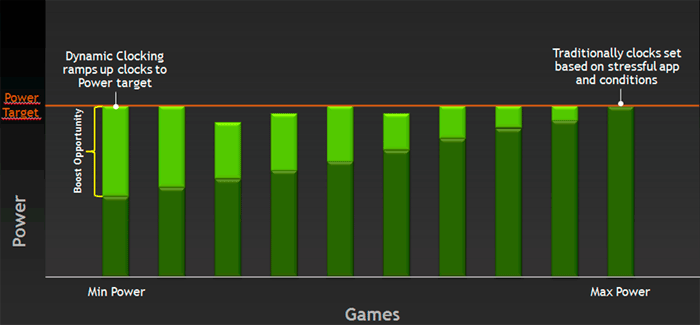Power efficiency - Dyn Clock Adjustment
Dynamic Clock Adjustment technology
The Kepler GPU based products will feature Dynamic Clock Adjustment technology and we can explain it easily without any complexity. Typically when your graphics card idles the card's clock frequency will go down... yes?
Well, obviously Kepler architecture cards will do this as well, yet now it also works vice versa. If in a game the GPU has room left for some more, it will increase the clock frequency a little and add some extra performance. You could say that the graphics card is maximizing its available power threshold.
 Example of a stress test applied to the GPU, where the baseclock of 915/1019 MHz goes much higher, climbing to even ~1100 MHz.
Example of a stress test applied to the GPU, where the baseclock of 915/1019 MHz goes much higher, climbing to even ~1100 MHz.
DCA resembles Intels Turbo Boost technology a little bit by automatically increasing the graphics core frequency when the card works below its rated TDP. The baseclock of the GTX 690 in 3D mode is 915 MHz, it can now boost towards 1019 MHz when the power envelope allows it to do so. The 'Boost Clock' however is directly related to the maximum board power, so it might clock even higher as long as the GPU sticks within its power target. We've seen the GPU run to an excess of even over 1100 MHz for brief periods of time with certain applications.
Overclocking on that end will work the same as GPU boost will continue to work while overclocking, though it stays restricted within the TDP bracket. We'll show you that in our overclocking chapter.

